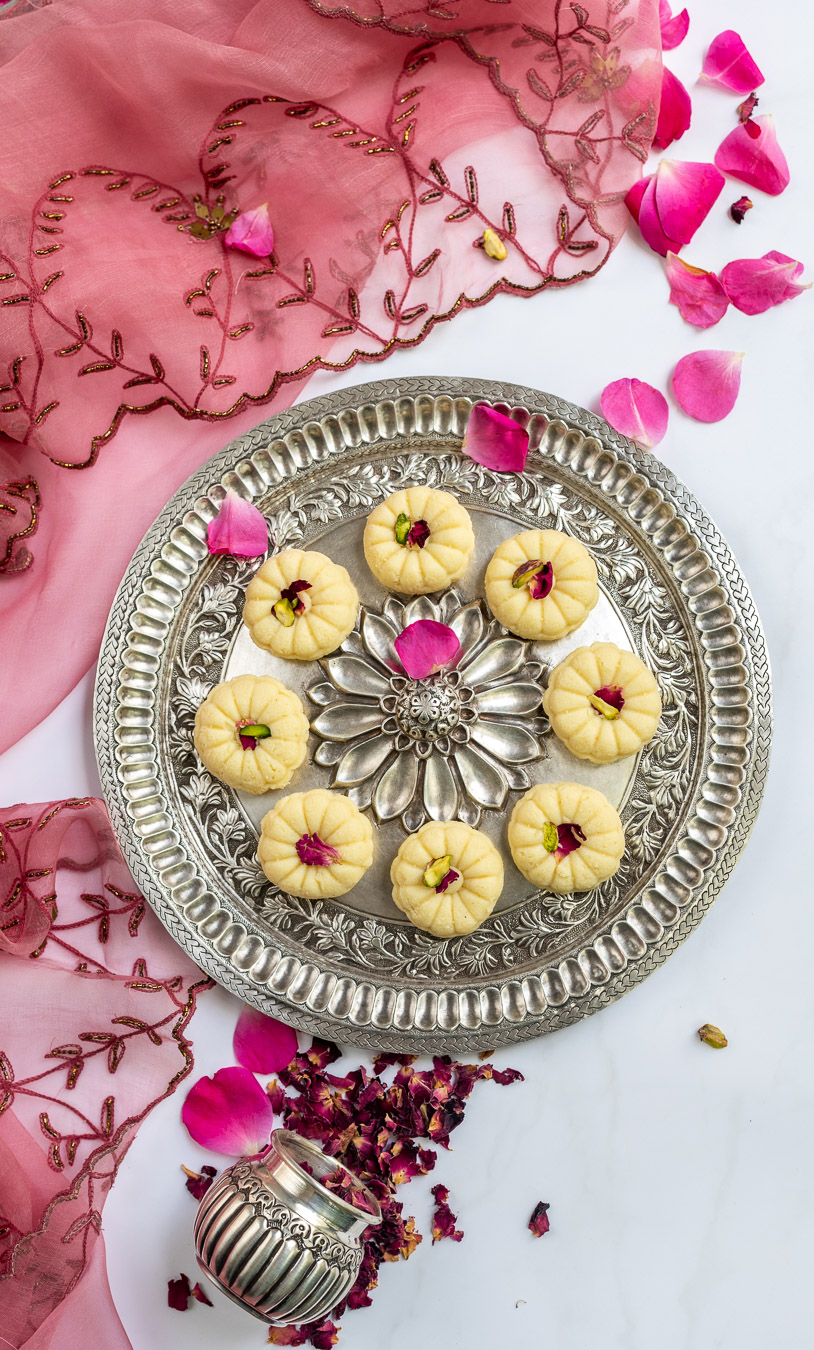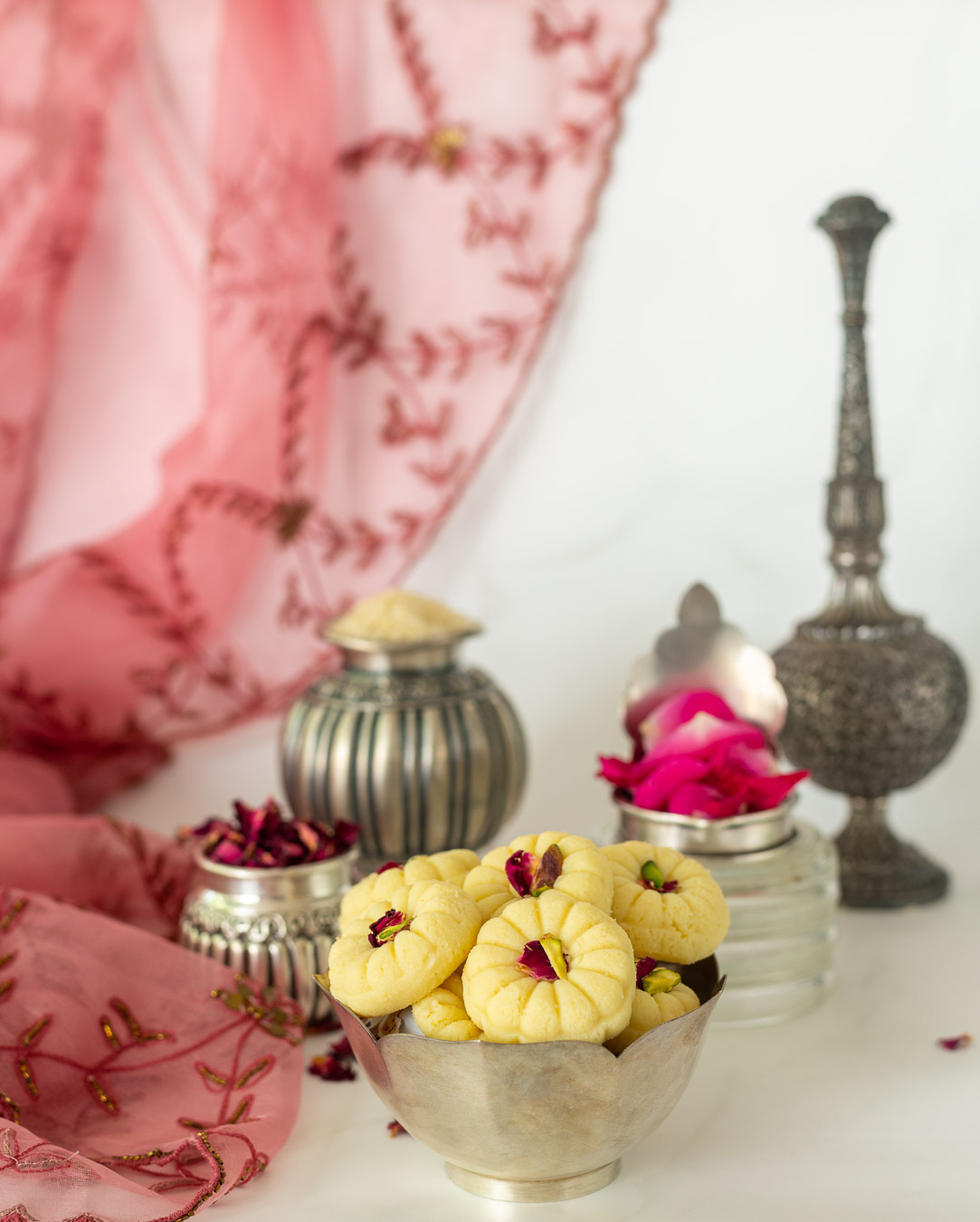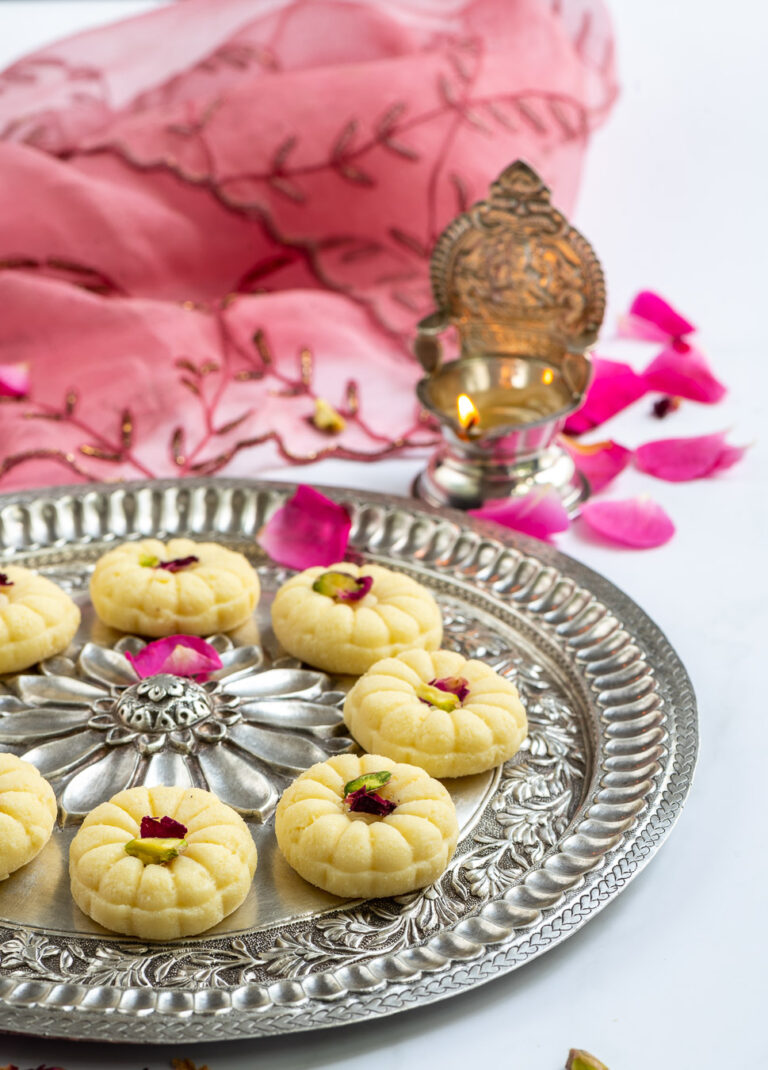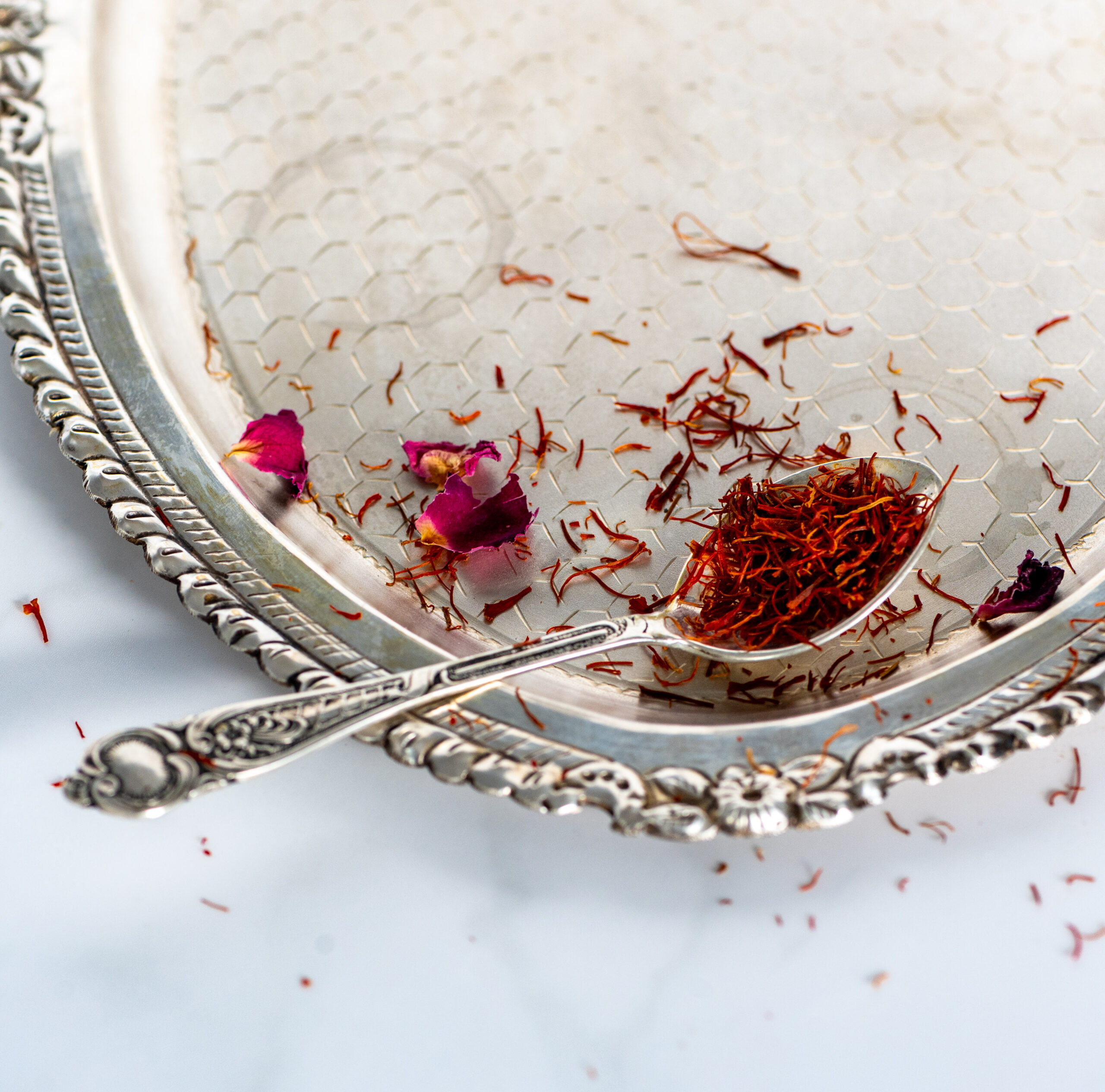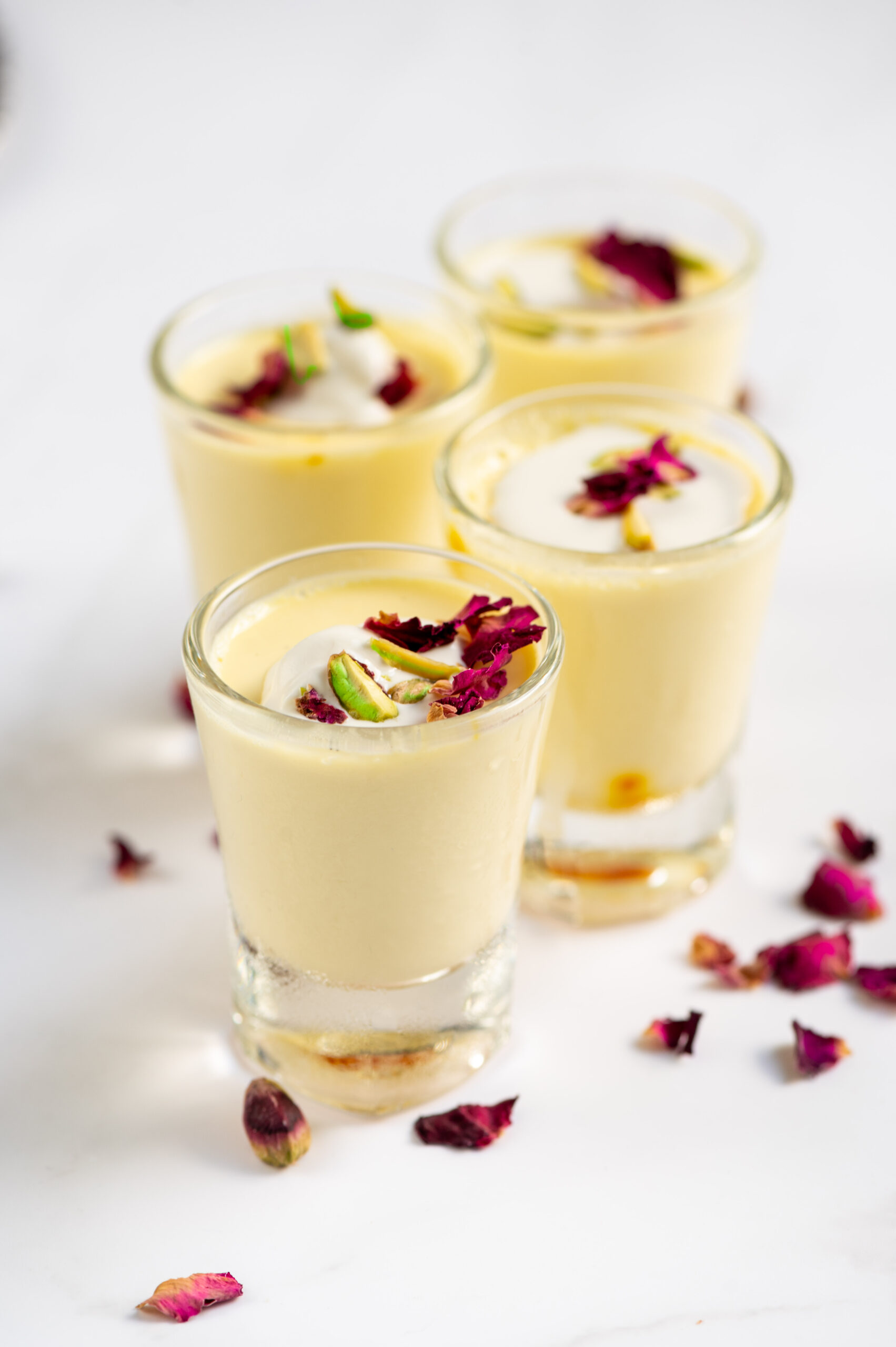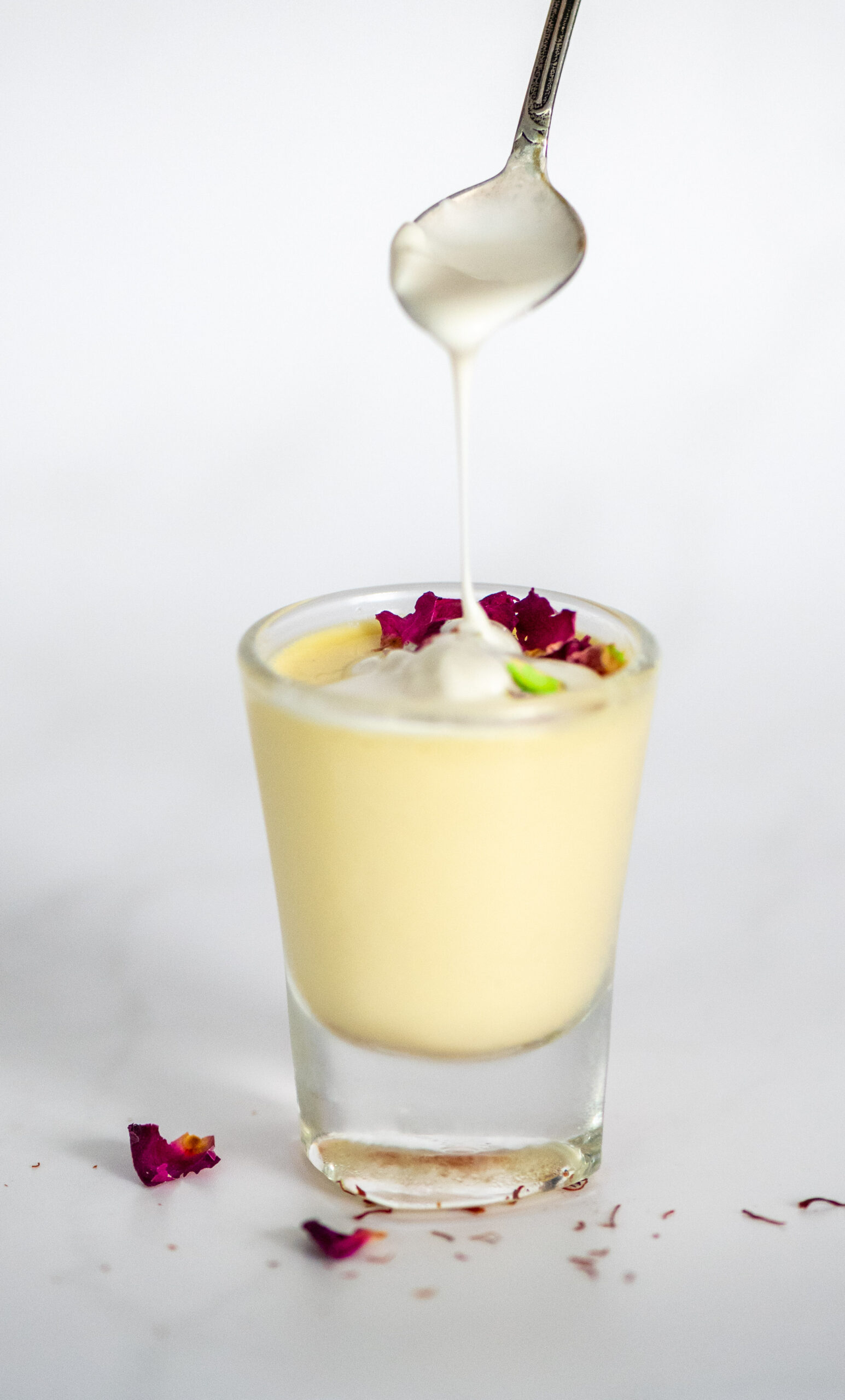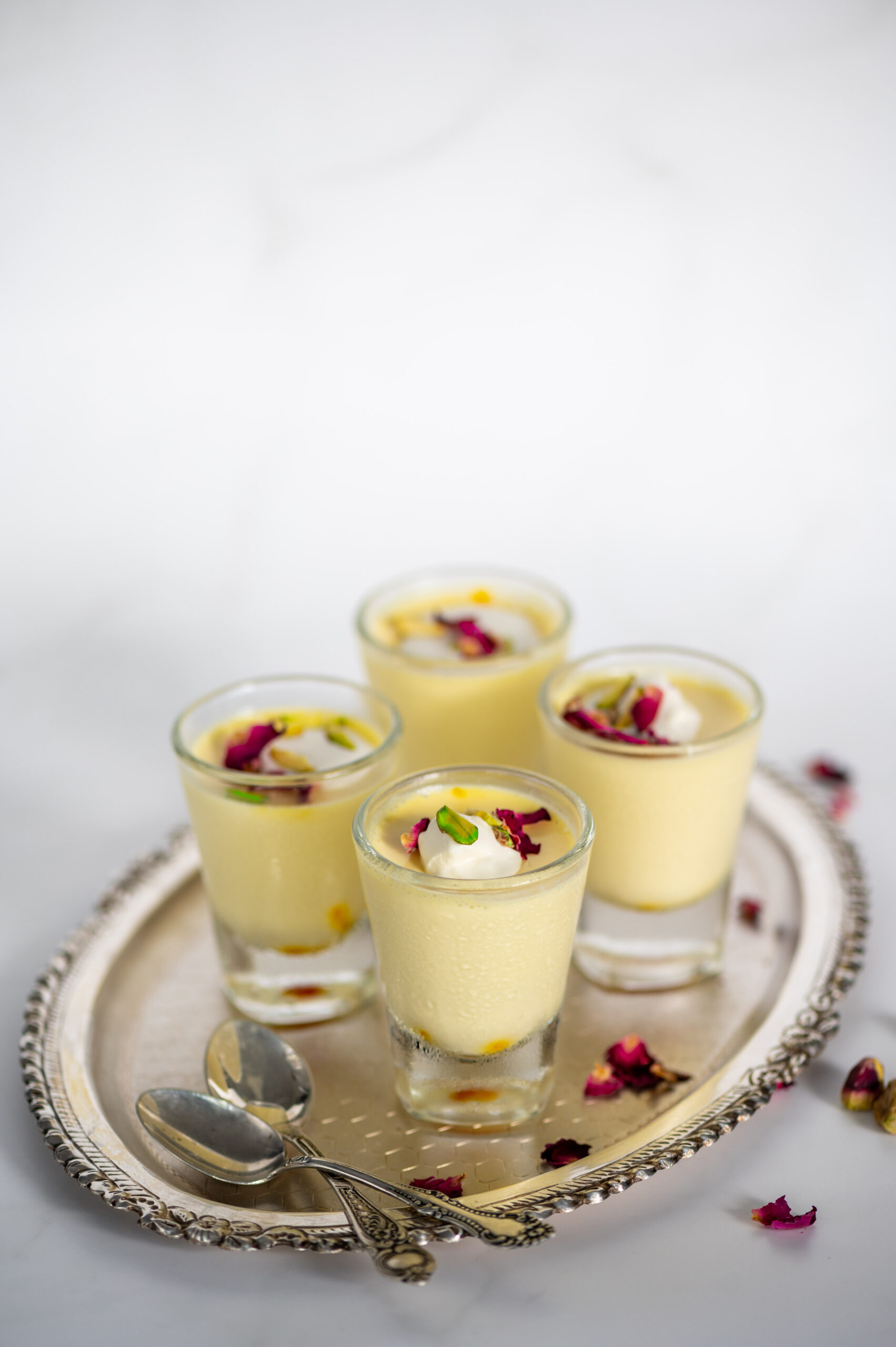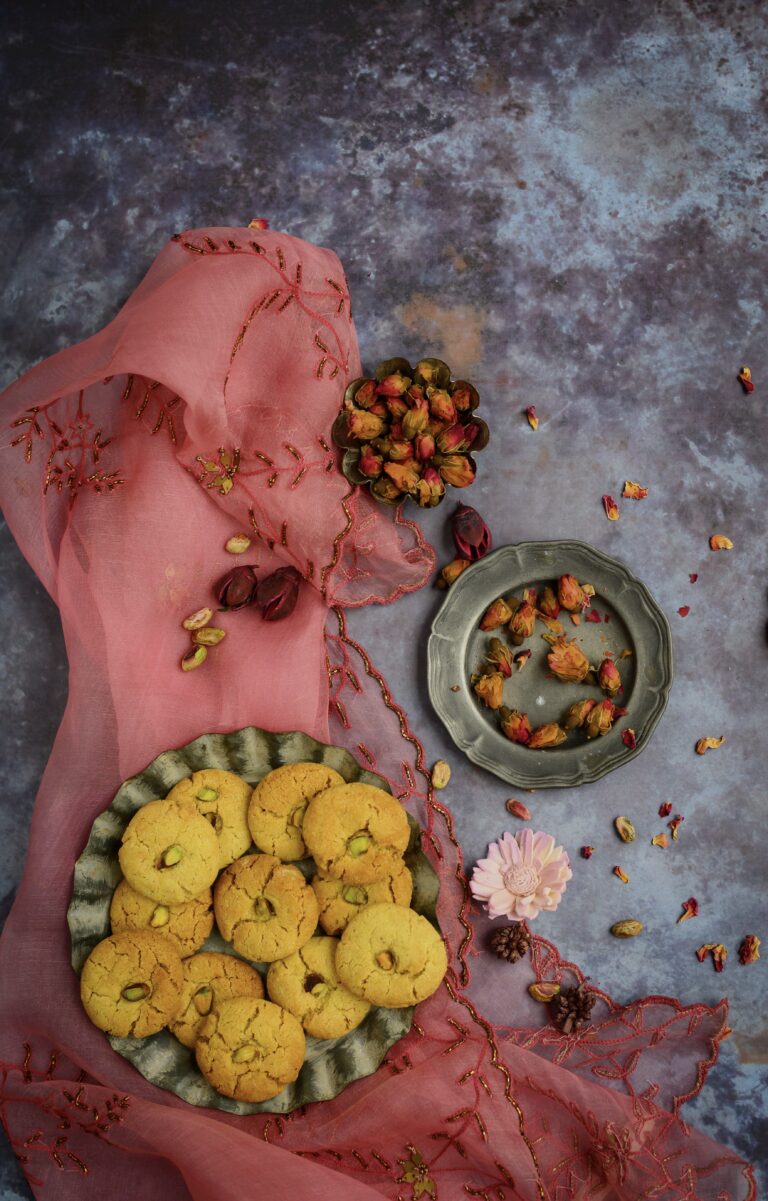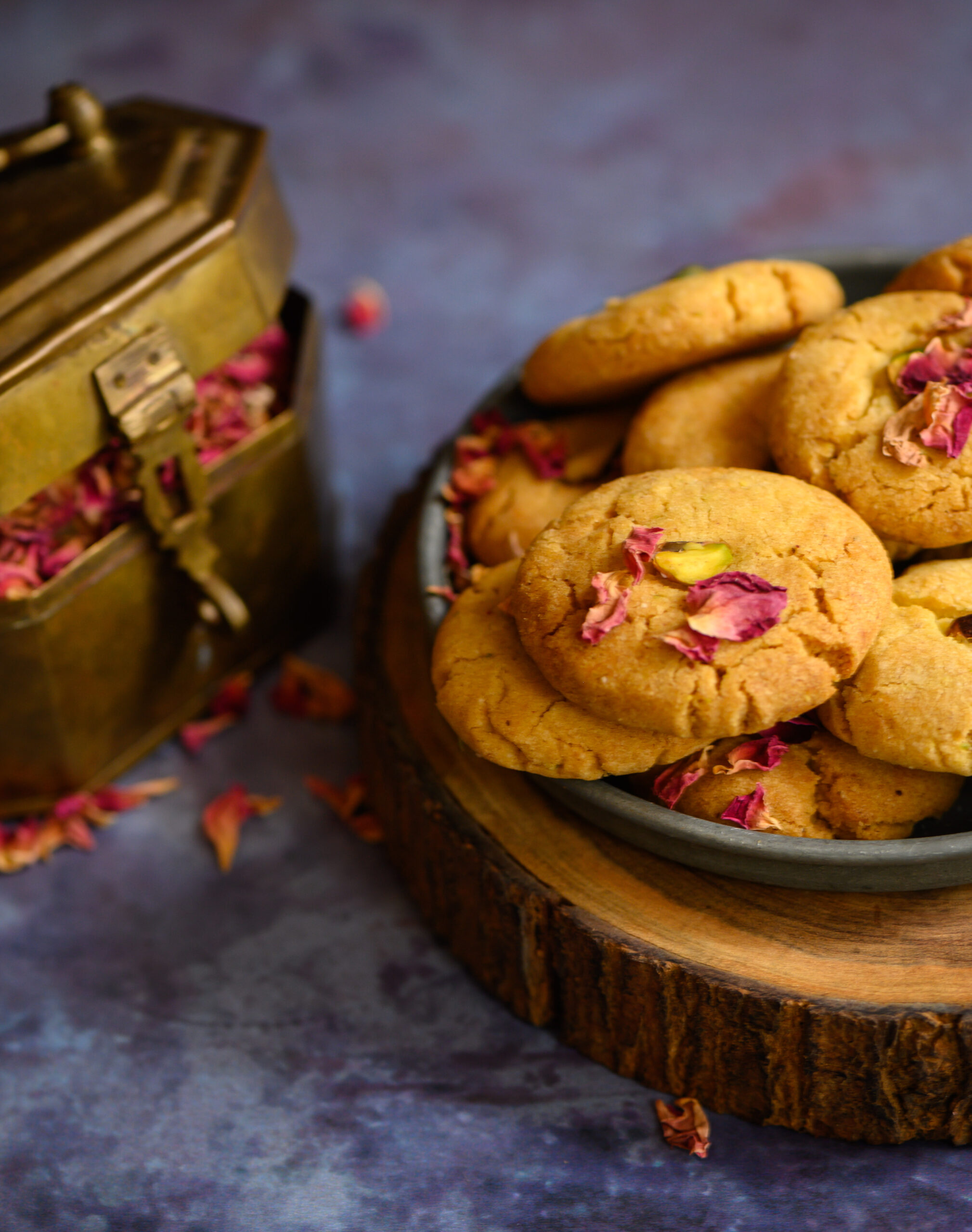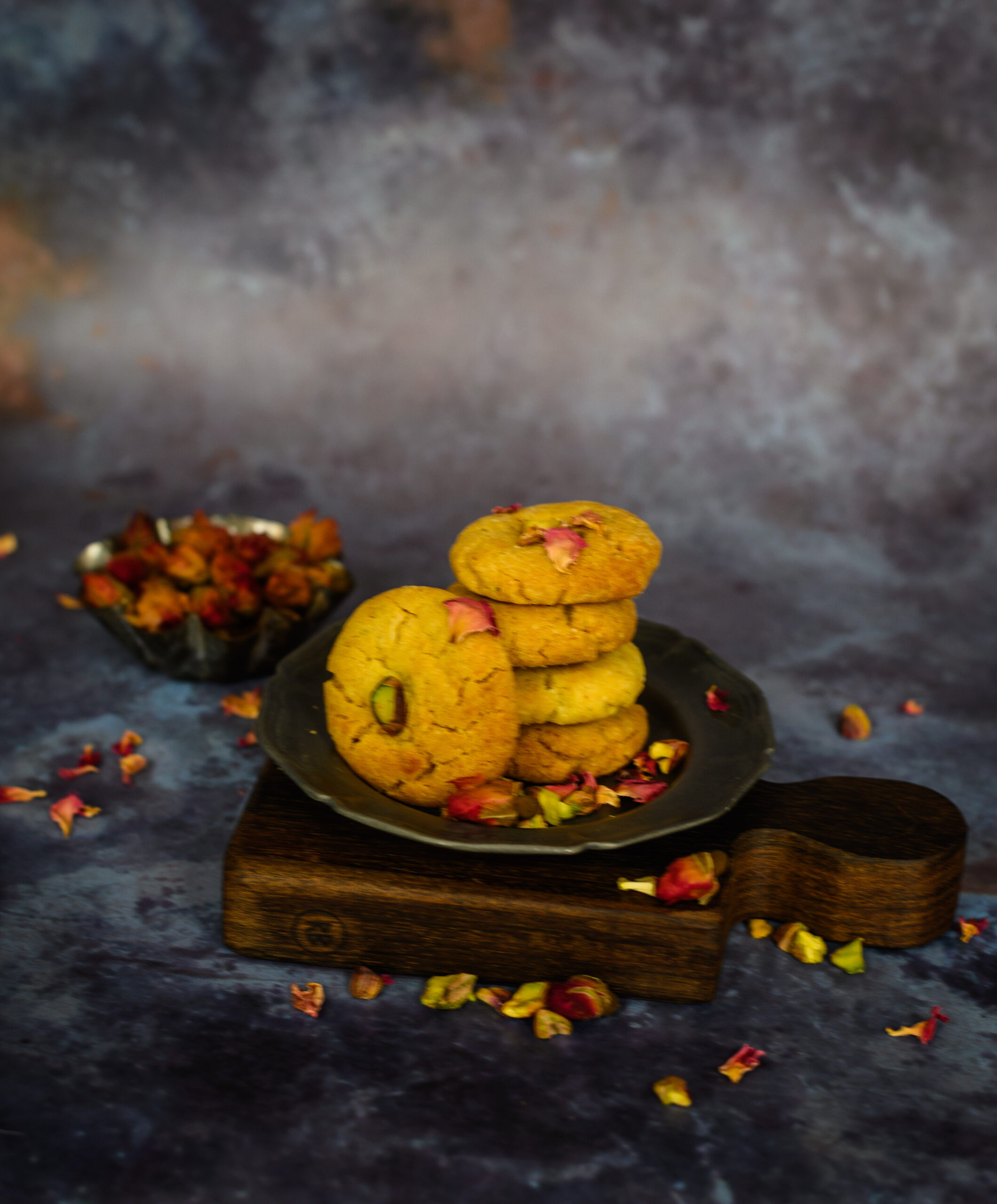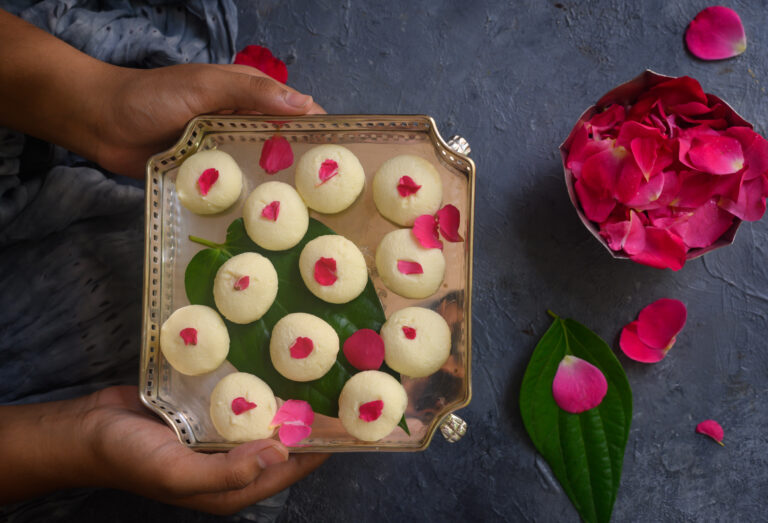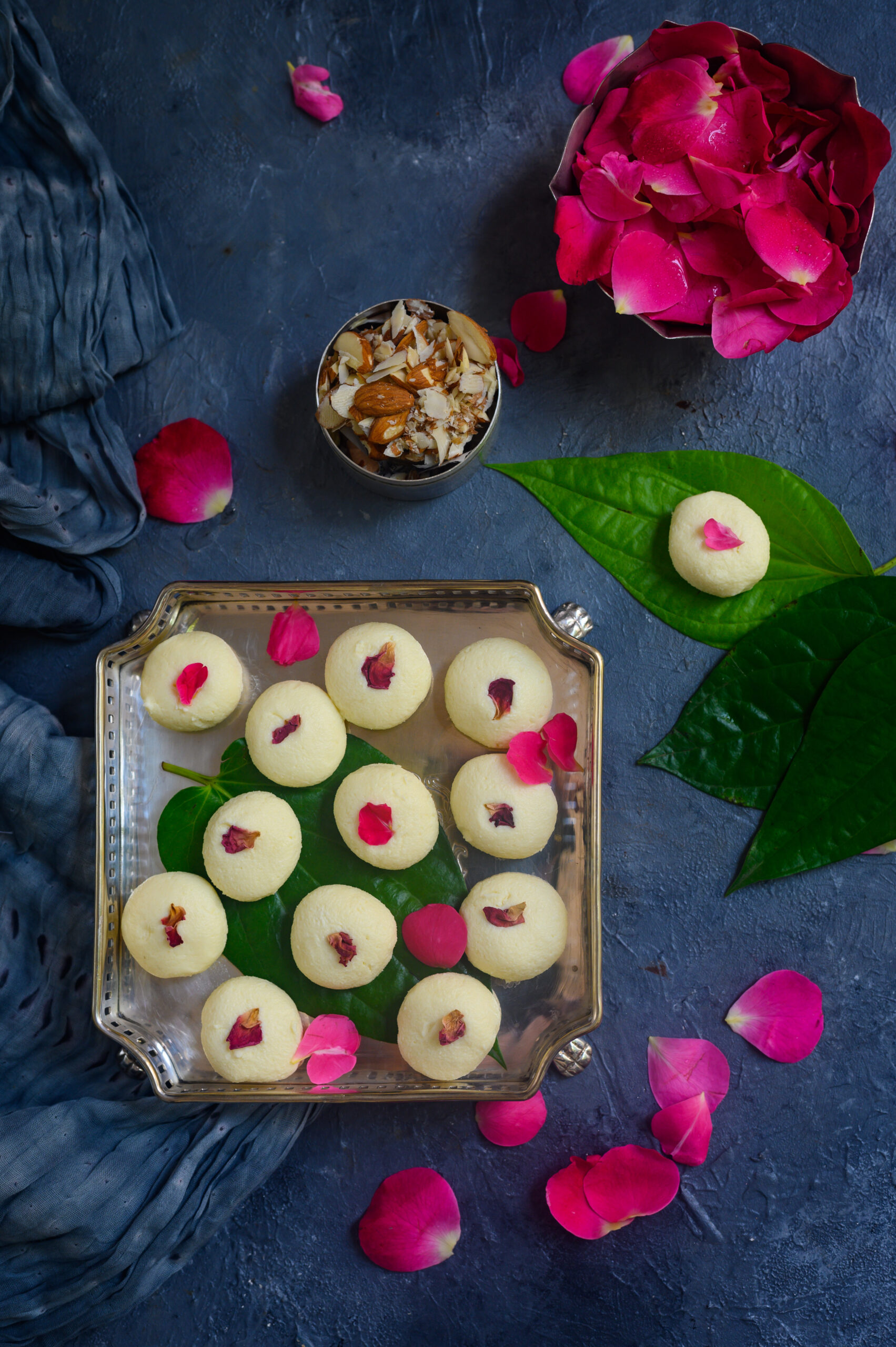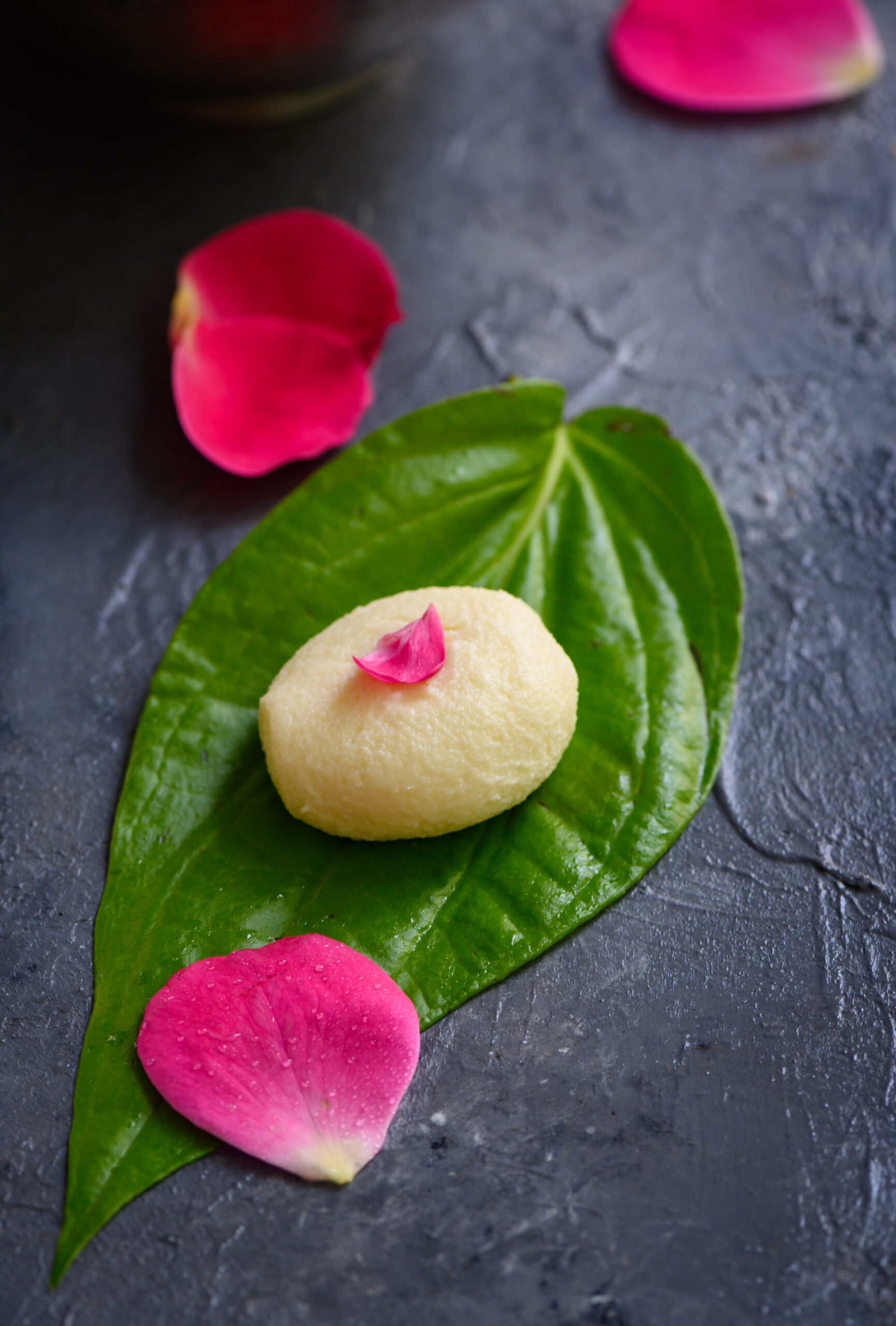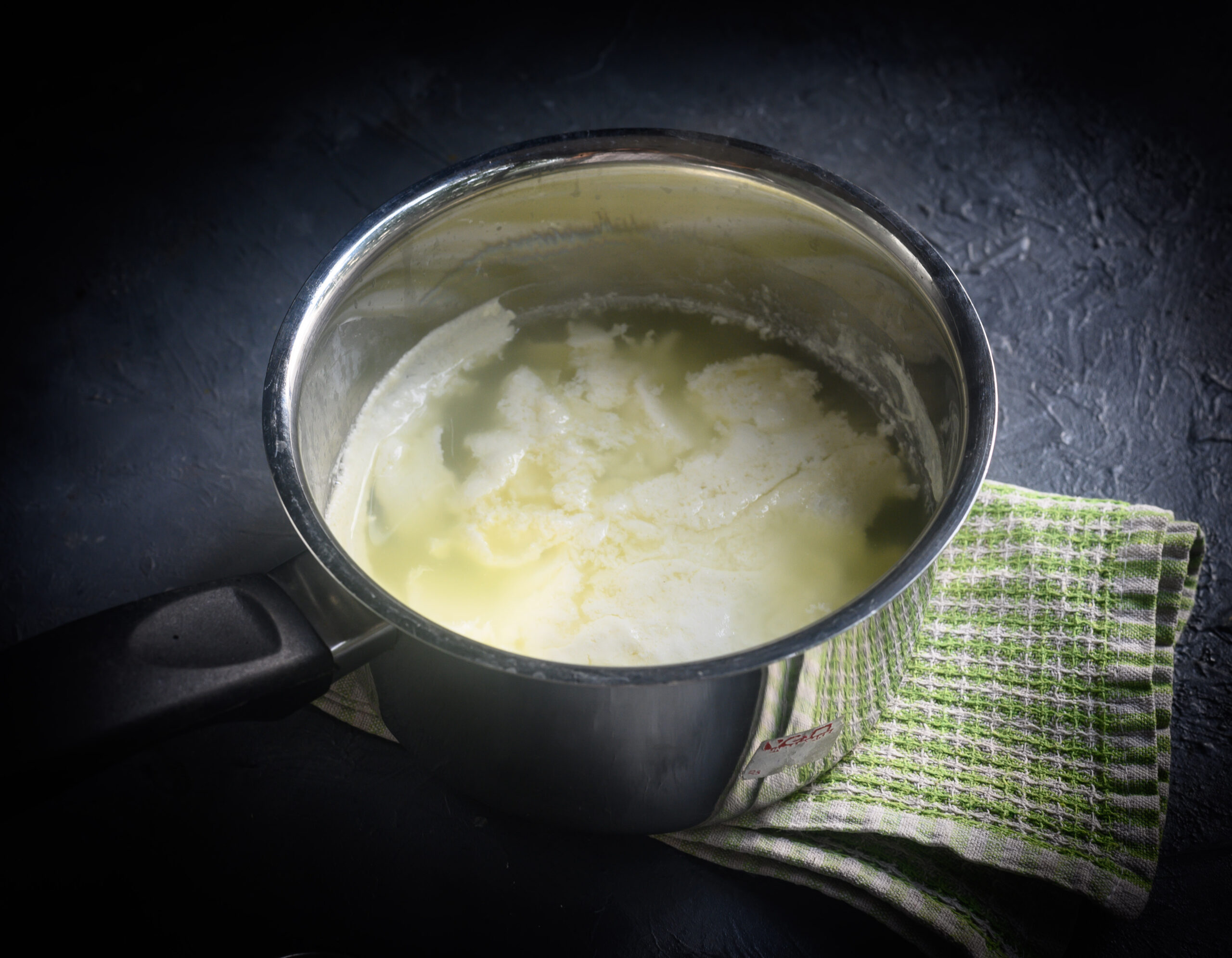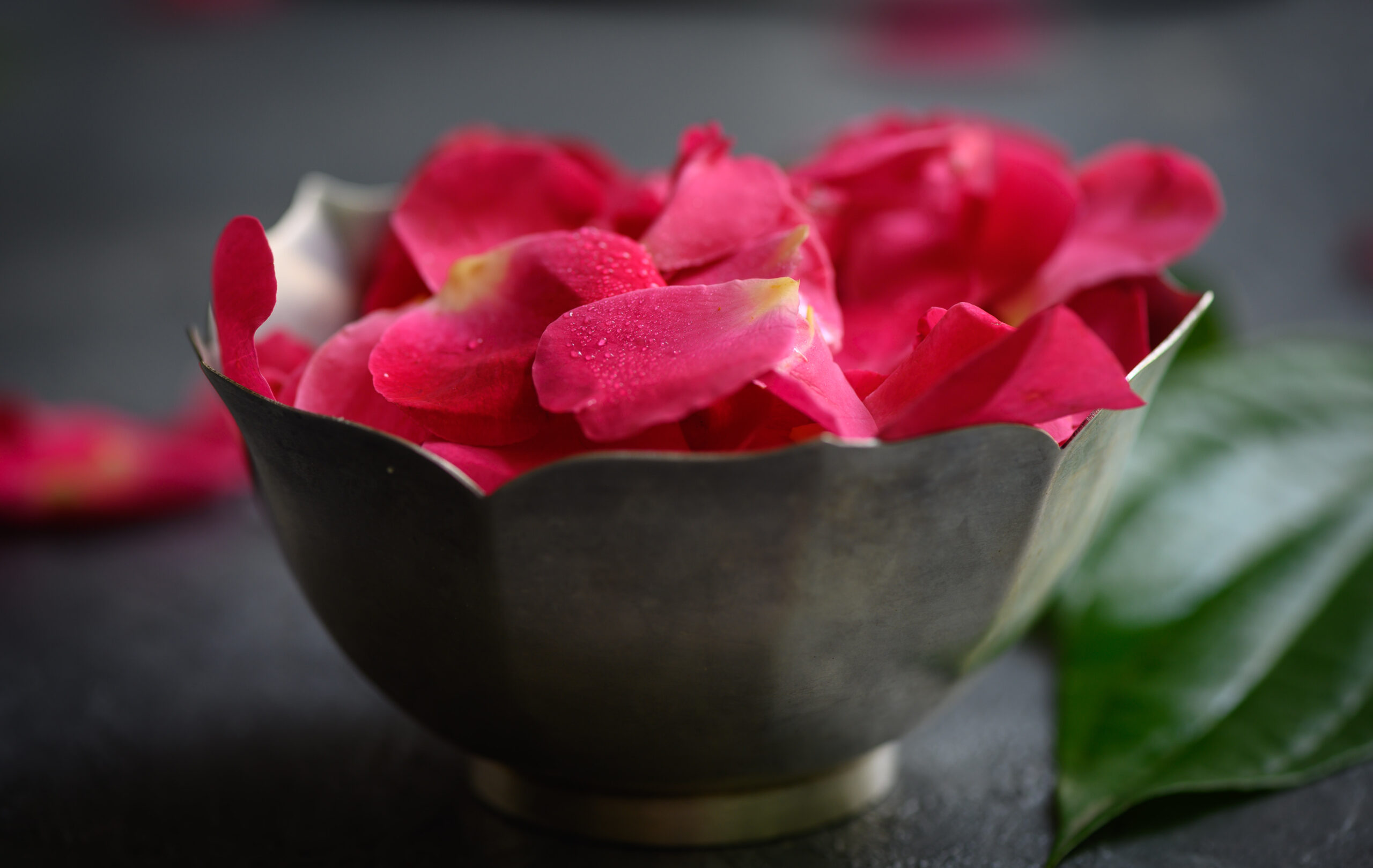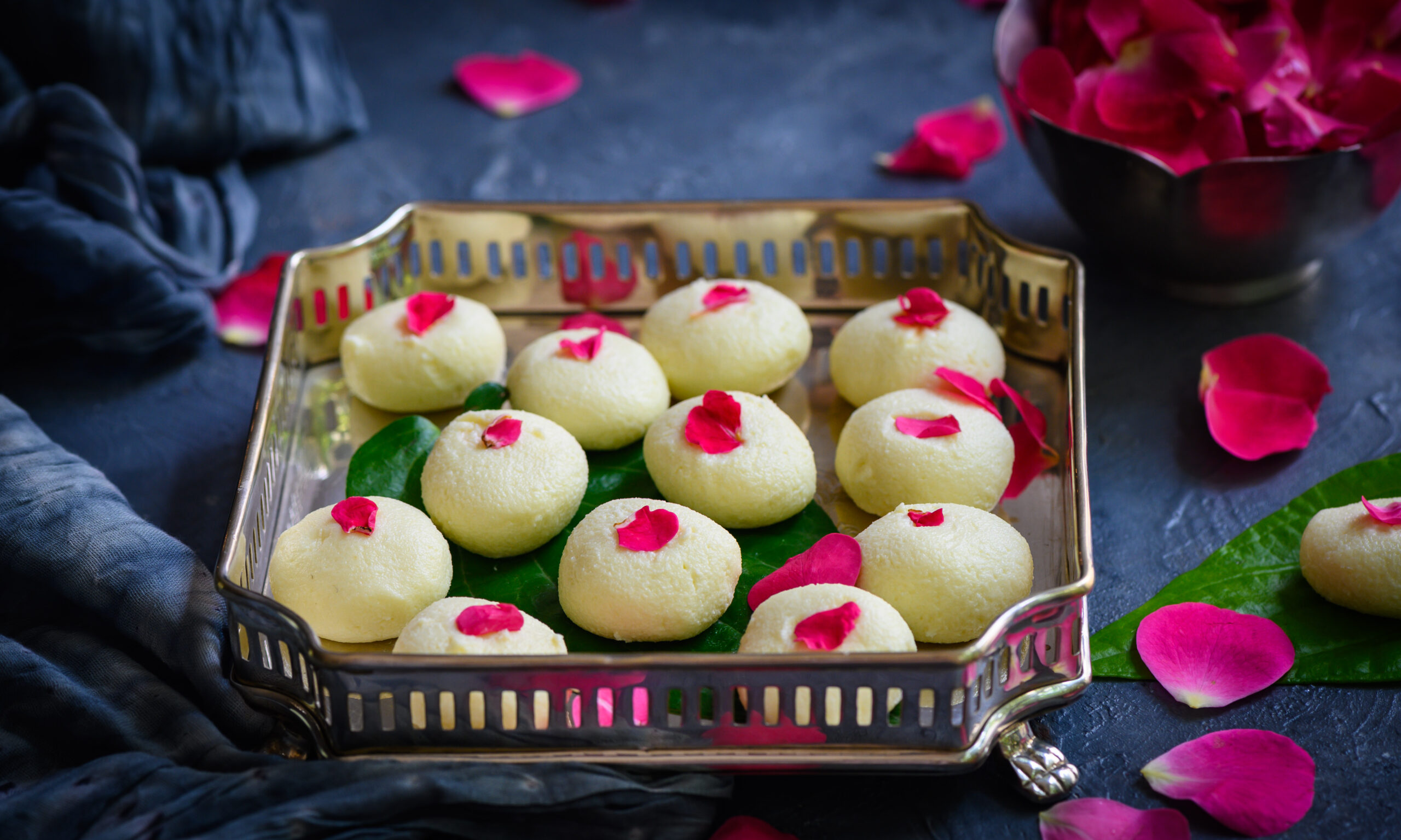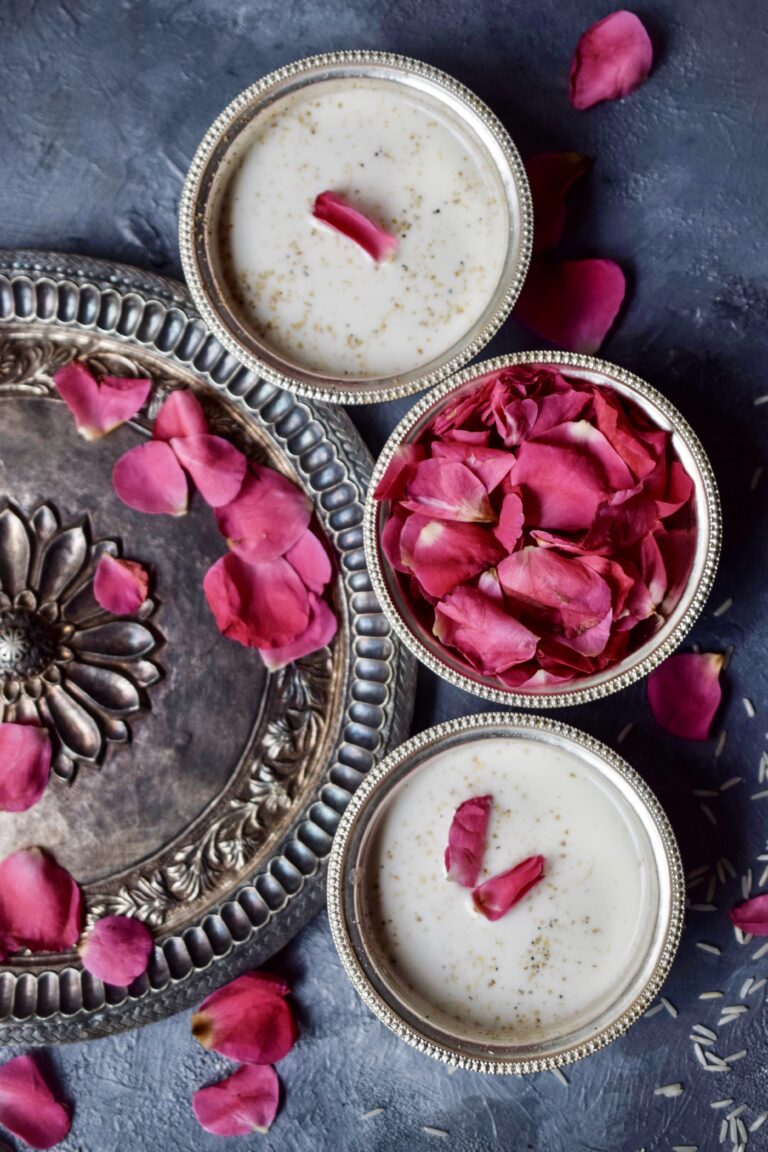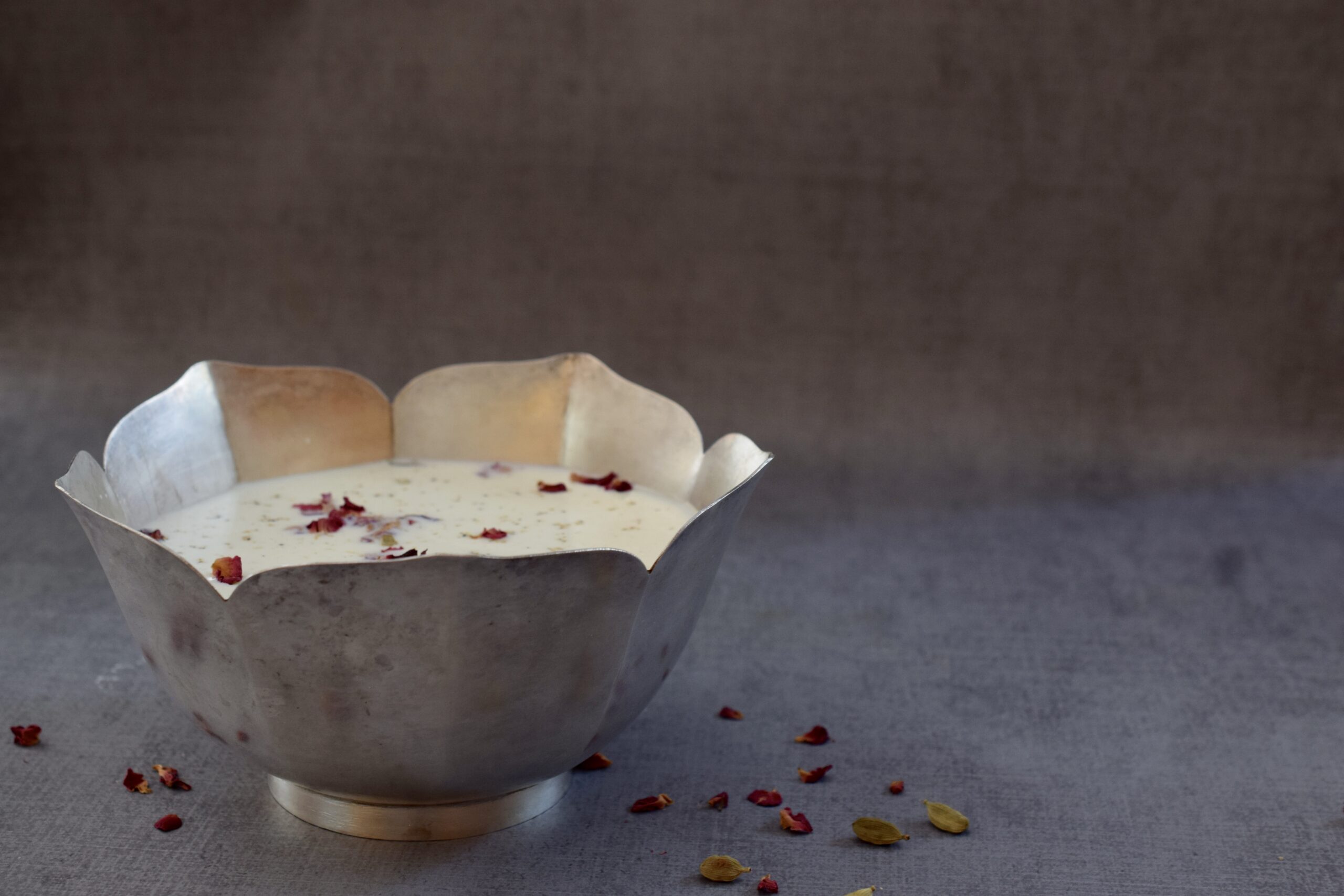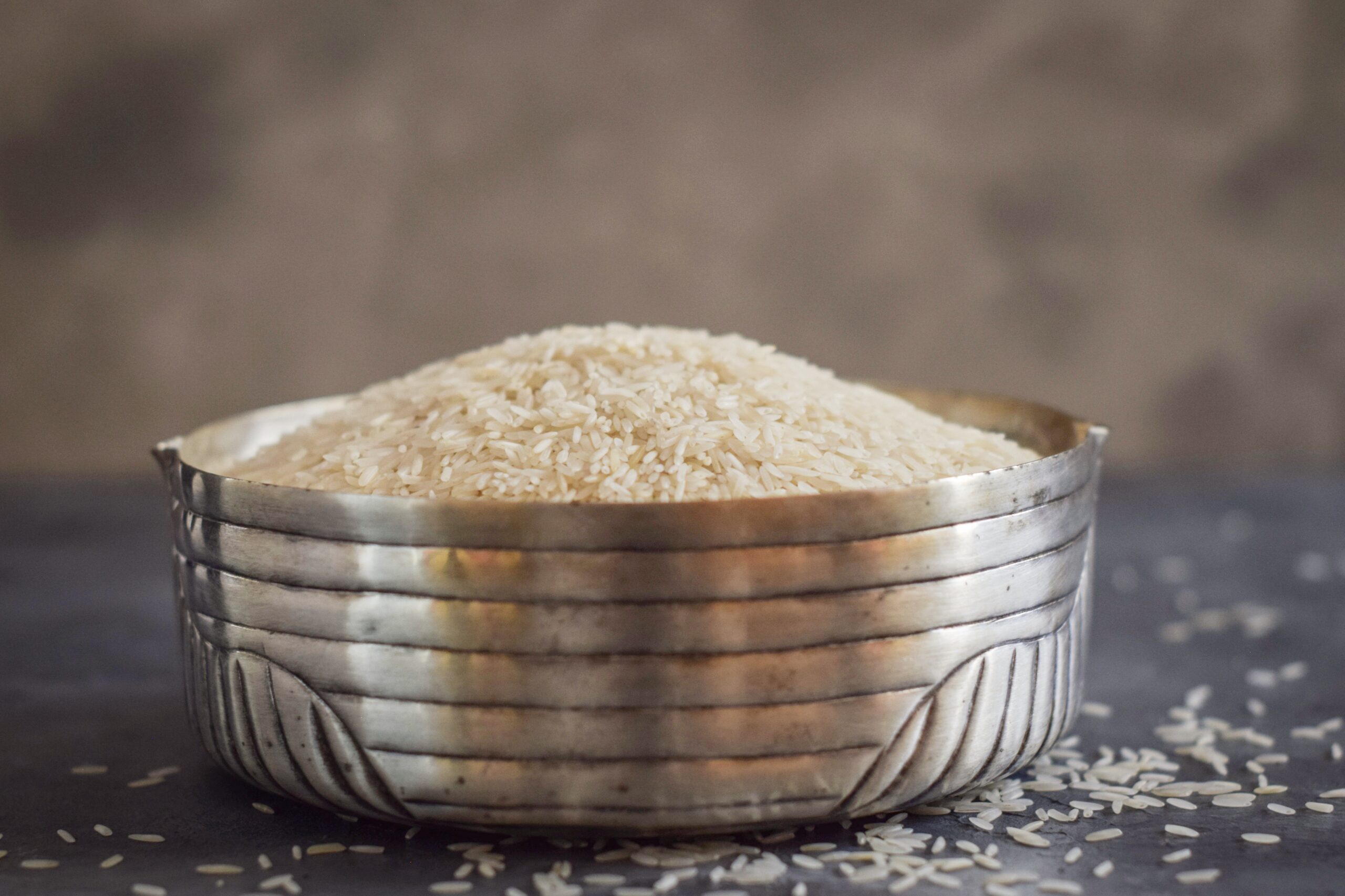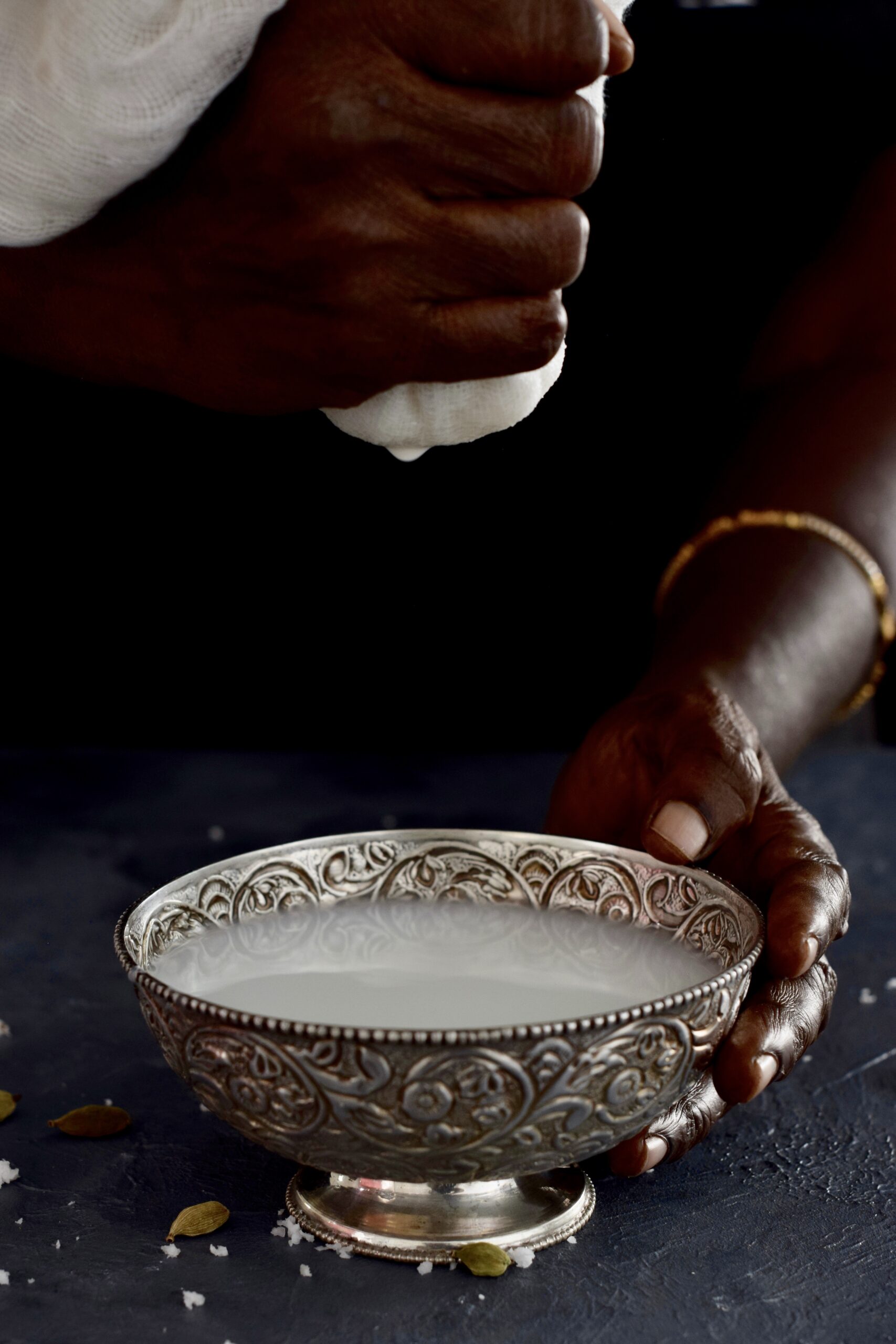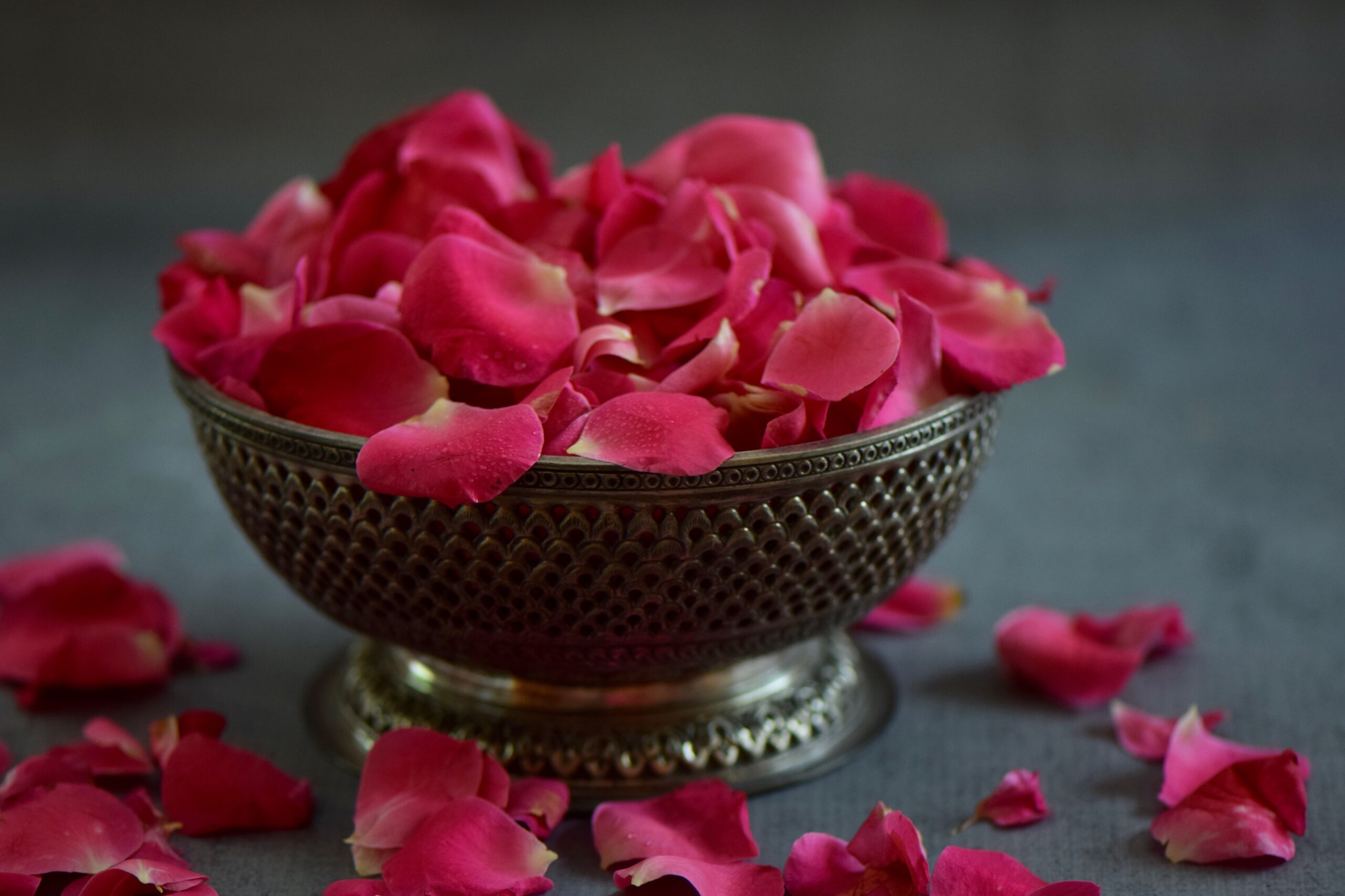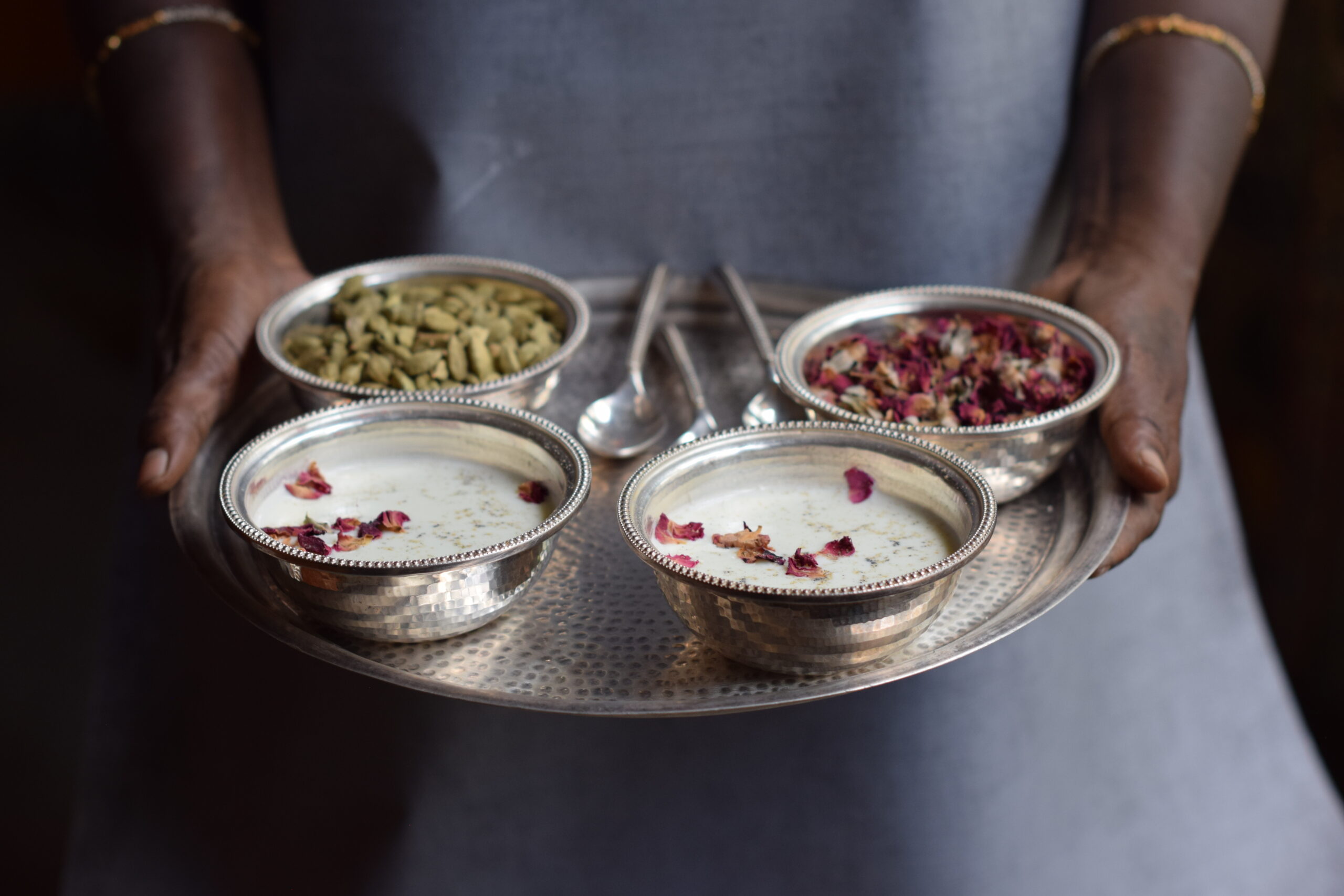A while ago, I noticed on Instagram that many people had been making pedas in lovely shapes. These Indian milk sweets are always a mood-lifter, and seeing them online inspired me to put them on my own festive menu this year. I’ve always been a believer that presentation goes a long way when it comes to any dish, and we usually eat with our eyes first. That said, taste is ultimately the most important factor. So, while dreaming up my own pedas, the two elements came together. Firstly, I sought out exquisite little moulds that would beautify my sweets, thinking of Kolkata’s famously attractive sandesh. Secondly, I gave the flavouring quite a lot of thought. Through some trials, I eventually settled on one of my favourite flavours, and indeed one of re:store’s signature ingredients: rose water. These rose water pedas are aromatic, delicious and very sweet, just like I hope your Diwali will be.
Whenever I see something beautiful – either culinary or creative – I must learn to make it immediately. You could call it a flaw of sorts, or maybe a happy curse, but that’s just how I’m wired. From the moment of inspiration onwards, it becomes an obsession for me until I arrive at a rendition that I am happy with. That’s how I learnt how to bake, to photograph and to cook so many beloved items in my repertoire. I experiment, make mistakes and keep going until I succeed. Only sometimes do I concede that it’s time to give up, but even then I don’t consider those experiences failures. Rather, there are lessons in them too. When I succeed, the journey doesn’t just end at having made something. The next step is sharing it, which is why this blog exists, but also why I am an inveterate giver of gifts. In my case, my gifts are mostly edible nowadays.
The reason for this is that people really do receive enough and plenty of other kinds of gifts, and unlike a memento which may not be to one’s taste, food almost invariably will be consumed. Before I visit a friend, I now bake or cook a little gift, or else select organic vegetables and arrange them in a basket. These are items which I know for certain will be used by the recipient, and will never gather dust. Personally as well, there’s nothing more exciting to me than fresh ingredients, and I love getting gifts of the same. You may have noticed that many of my recipes here have been spurred by a present of some kind: such as lavender, cinnamon, saffron or more wonderful pleasures that travelled to me with love. Recipes, too, are fabulous gifts – and it’s my pleasure to keep gifting you these.
I learnt how to make basic pedas from my sister, who is the peda queen in my eyes. Peda-making was truly in my destiny because of a nickname in my extended family. My mother had nine siblings, and each had many children of their own, among whom I was one of the very youngest. As a baby, I seemed to that huge group of cousins to look like a little peda. So that’s what they called me: “pendo”, the Gujarati word for this dish. I remain Pendo to many of them, even to this day!
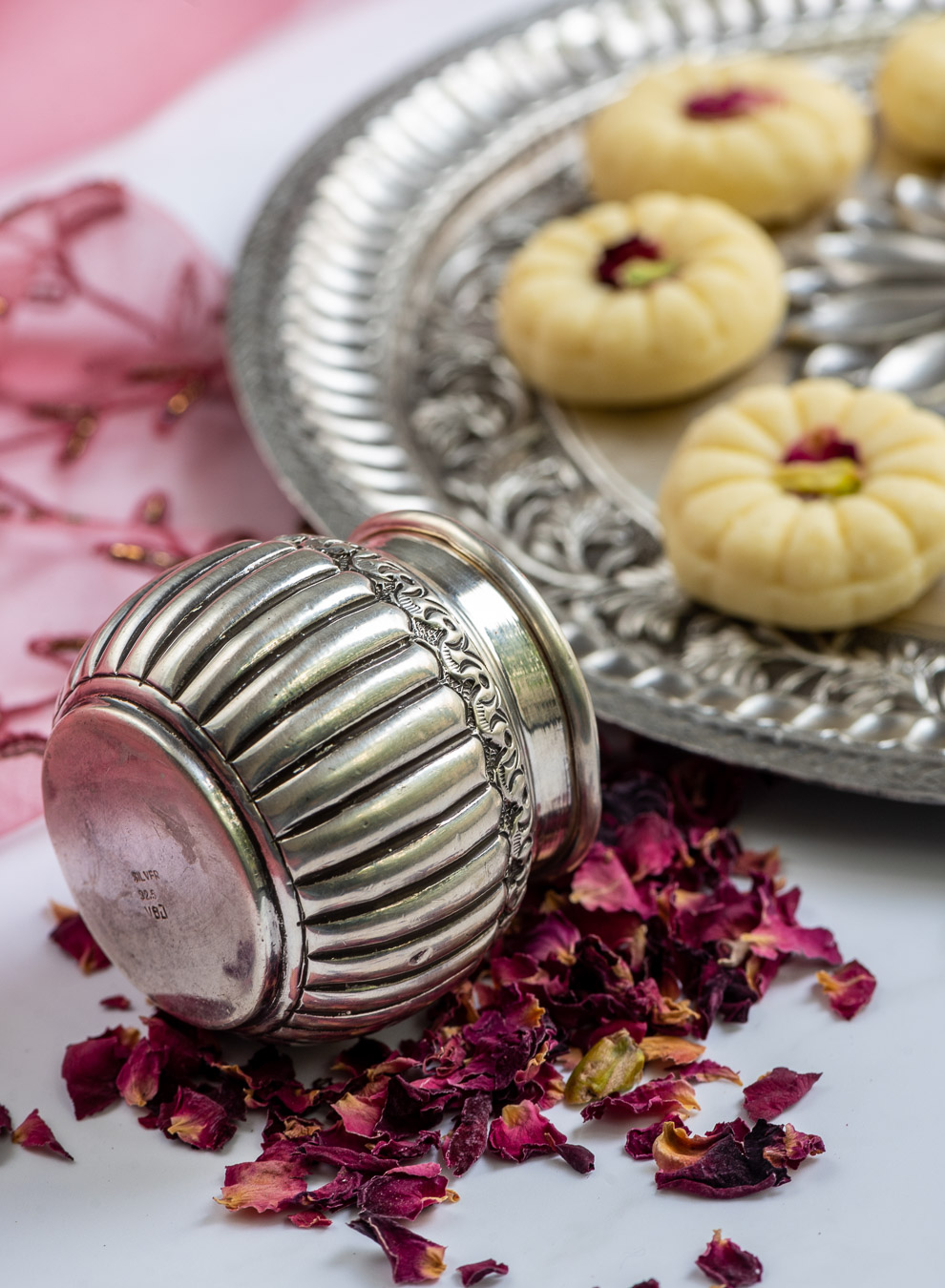
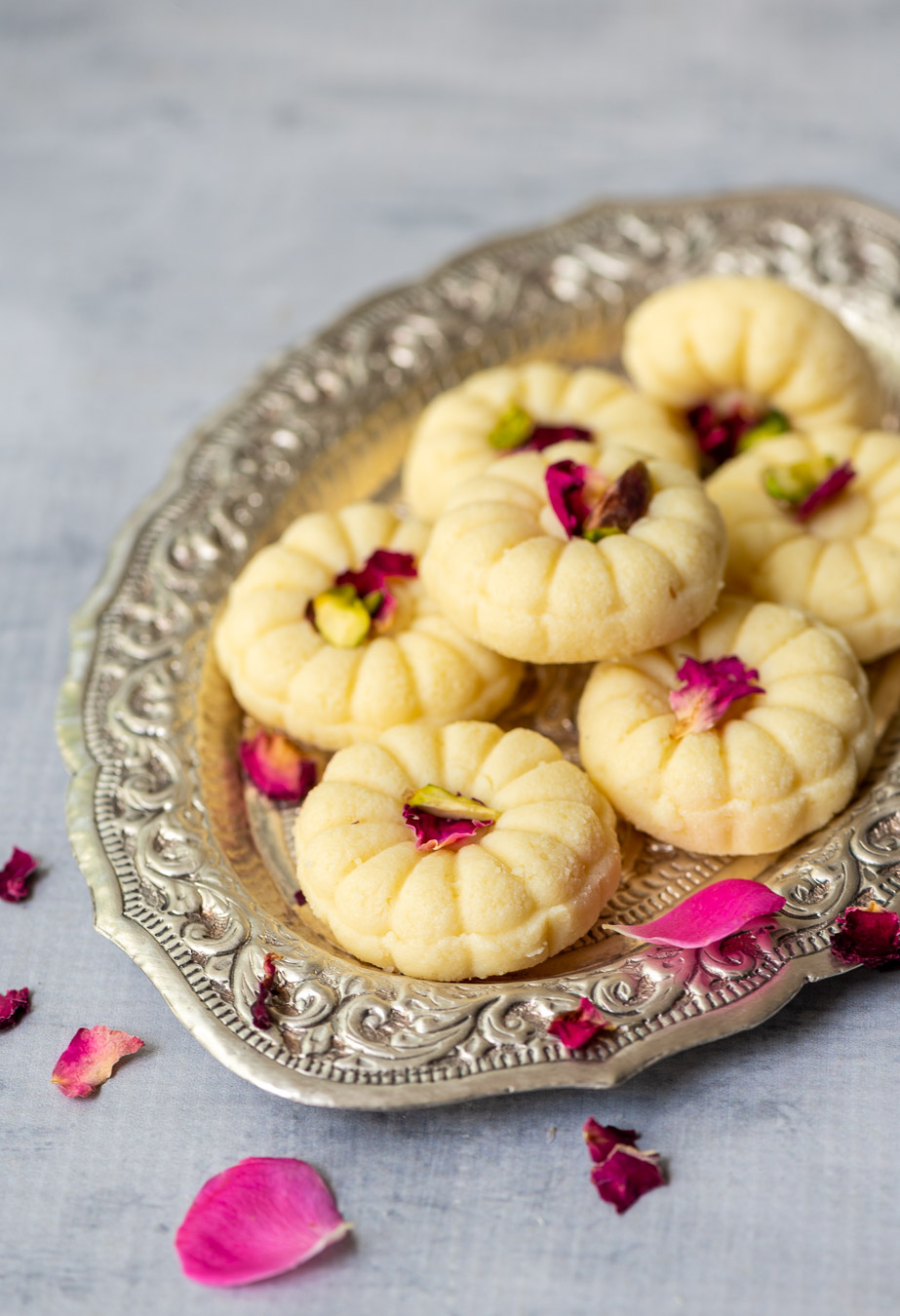
Rose Water Peda
(Yield: 10 pieces)
125 grams paneer
50 grams full fat milk powder
50 grams powdered sugar
2 teaspoons ghee
1 teaspoon rose water
1 teaspoon milk
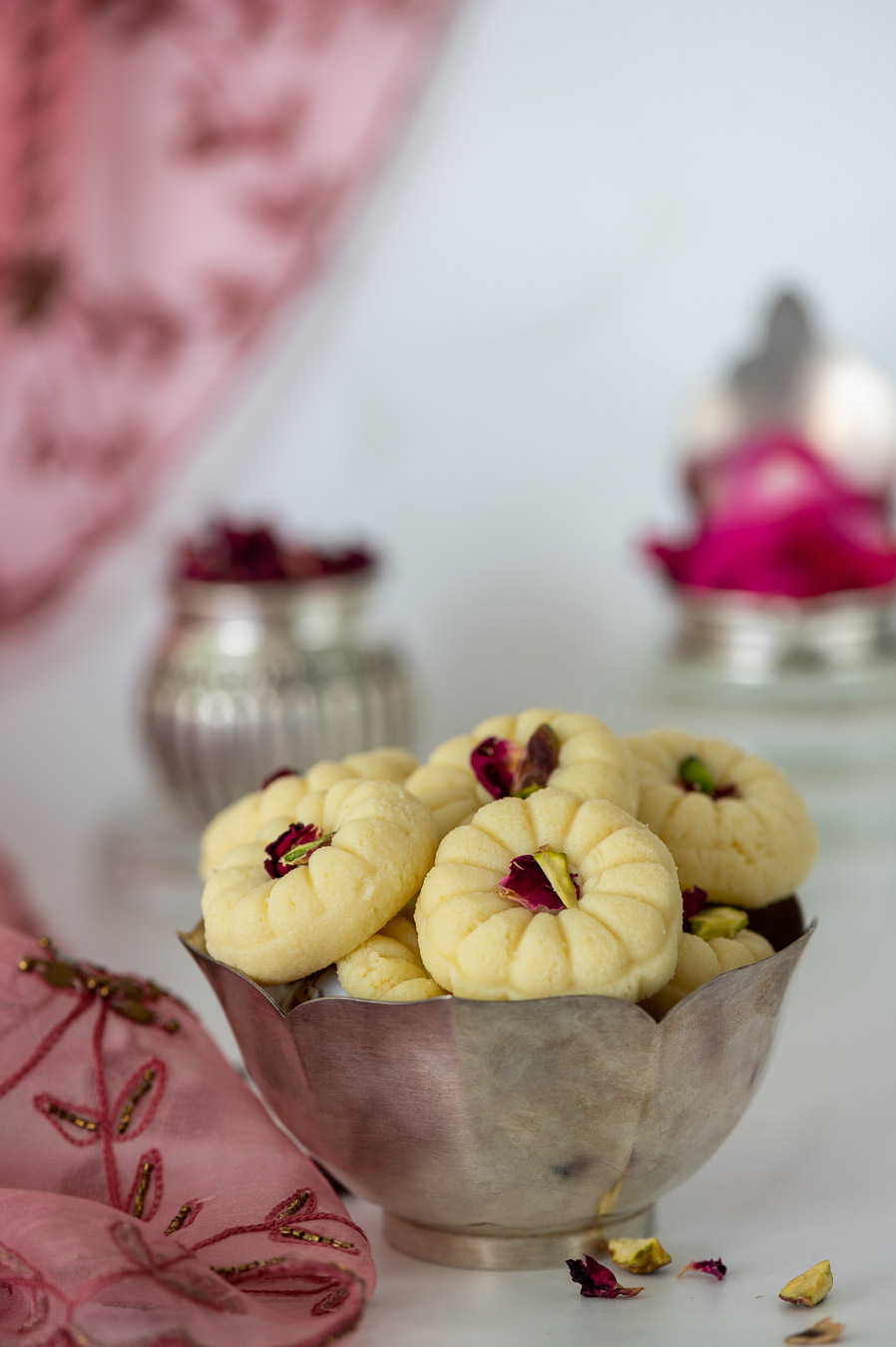
Grate the paneer and place it onto a plate. Knead it with the palm of your hand until it is soft and even, like dough. Form a ball and set aside.
Heat a non-stick pan and add the ghee. Once it is hot, add the paneer. Keep stirring and pressing the paneer down. The paneer will become soft and smooth. This process should take no more than two minutes.
Add the rose water and the milk powder. Mix well. Then add the sugar and turn off the flame. Mix it all well together once more. Spread onto a plate. Allow to cool.
Once cooled, use the palm of your hand to knead this mixture until it’s smooth. It will feel sticky, but do not worry.
Then, wrap the mixture with cling film. Keep it in the refrigerator for between ½ an hour to five hours.
You will notice that this recipe uses milk powder rather than milk, and this is a common modern innovation on the old method, which involved boiling and boiling milk for hours on end. Milk powder makes the process far simpler and faster, while retaining the classic taste of this deeply cherished Indian sweet.
When you are ready to prepare the peda, take out the cold mixture and knead it once again, making sure there are no lumps. Now, make small balls and reshape them as you desire, or use moulds. Garnish with rose petals and pistachio slivers.
Keep the peda at room temperature, but protected by a netted cover. Allow to sit for a few hours.
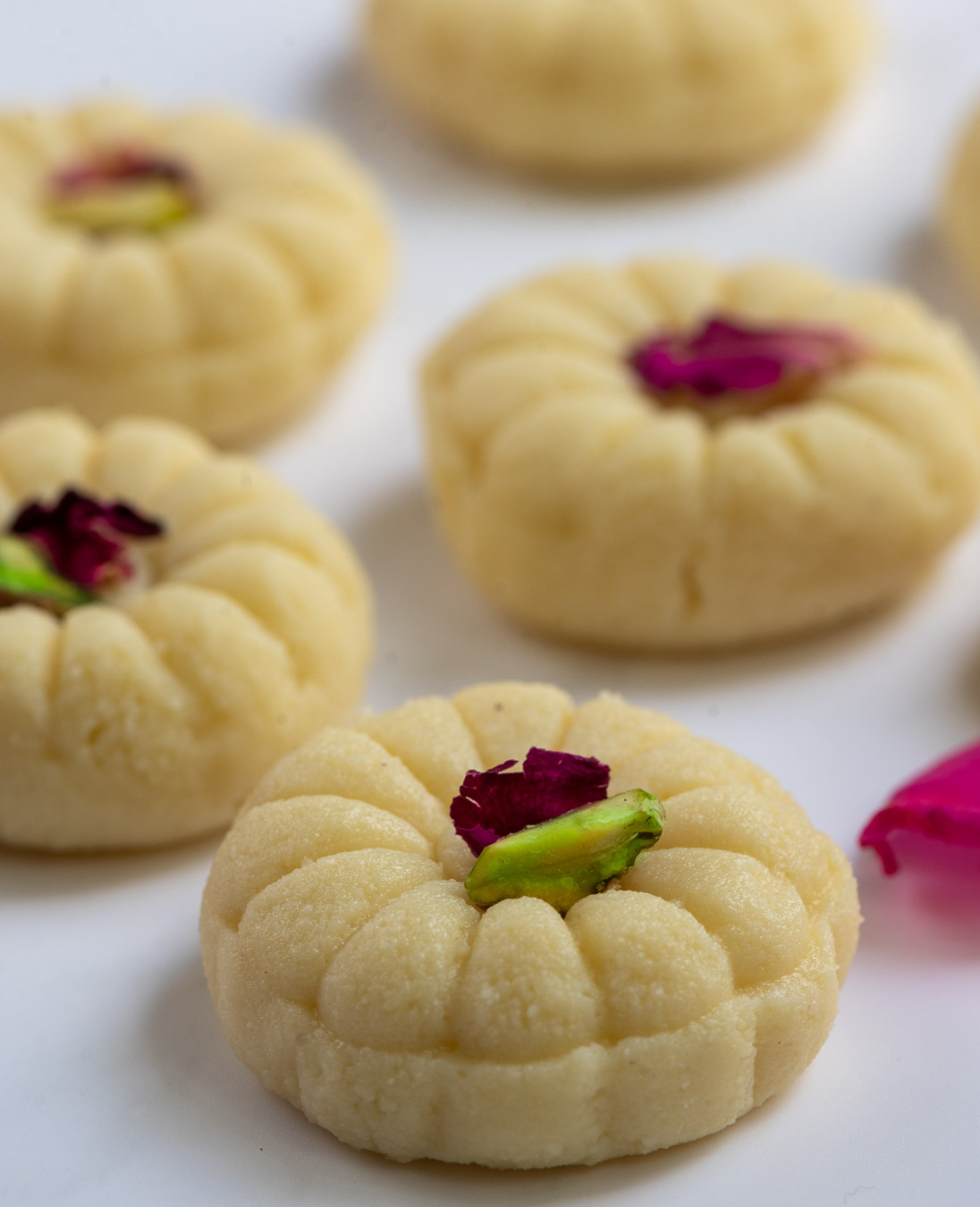
Serve, and relish the delicate taste of these lovely rose water pedas. You can store any remainder in the refrigerator, as long as you consume them within three days.
In my home, whenever I make peda, the first offering is always to Balakrishna or Baby Krishna, the god who is very fond of dairy according to all the stories about him. He is our family deity and we have a seva or service for him every day, an elaborate process of waking him, bathing him, treating him lovingly like a child and of course feeding him. So when I’m making pedas, I always make tiny ones to offer at the altar, alongside the regular-sized ones. As with all kinds of prasad, it is never tasted while being cooked, as it must be offered pure.
Do you have rituals like these too, in which food and faith come together? I’m always interested in learning more about world cultures, and would love to hear from you.
